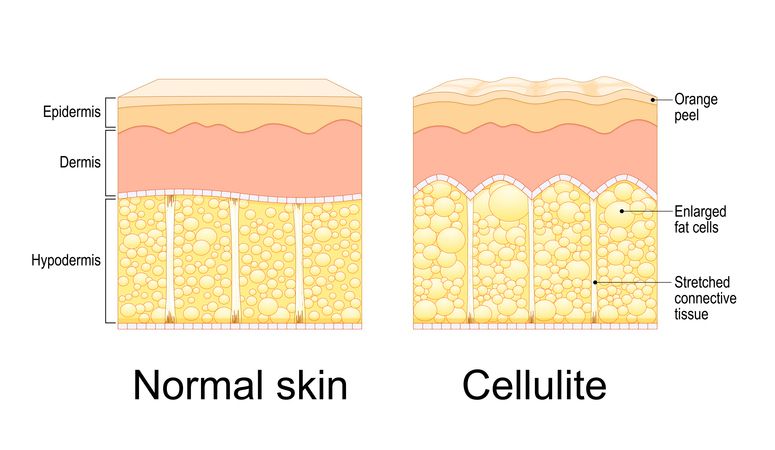
Author: Natalie Ng|Updated: 6 May 2025
Trying to burn body fat but not seeing results? You’re probably making a few common mistakes—like eating too few calories, skipping strength training, or relying only on cardio. Maybe you’re following a fad diet, not getting enough protein, or overlooking sleep and stress. These habits can mess with fat loss, slow your progress, and even lead to weight gain or muscle loss. Fat burning isn’t just about eating less and working out more. It’s about doing the right things consistently—like building muscle, managing stress, and making sure you're recovering properly. In this post, we’ll break down the most common mistakes people make when trying to lose fat—and how to avoid them for better, lasting results.

Skipping Meals and Severely Restricting Calories
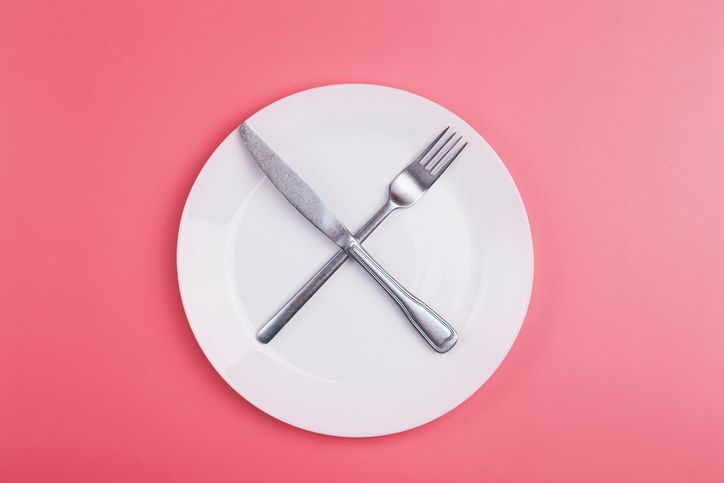
Eating too little slows everything down
Many people think eating fewer calories will speed up fat loss. But eating too few calories or skipping meals can actually do the opposite. Your body starts to burn fewer calories by slowing your metabolic rate. This makes it harder to lose weight—even if you're trying to burn fat.
You’ll feel worse and crave more
Skipping meals usually leads to stronger hunger later. That can cause you to eat more calories in one sitting or crave processed foods with added sugar. This cycle works against your fat loss goals.
You need fuel to keep muscle and energy
Going too long without eating can also lead to muscle loss. Without enough protein and calories, your body breaks down muscle mass, not just fat. That affects your body composition and can make the scale weight misleading. You might weigh less but still carry excess fat.
What to do instead
Eat regular meals with enough protein, healthy fats, and carbs. A balanced diet helps you maintain lean muscle and keeps your energy stable. It also supports hormonal balance, better mood, and overall health—all important for sustainable fat loss.

Relying Only on Cardio Exercise

Cardio helps—but it’s not enough
Cardio workouts like running or cycling help burn calories and support heart health. But if you're trying to lose fat and only doing cardio, you're limiting your results. Over time, your body adapts to repetitive cardio and becomes more efficient—meaning you burn fewer calories doing the same workouts.
You might slow your metabolism
Doing only cardio without building muscle can lead to a drop in lean mass. Since muscle tissue burns more calories than fat, losing muscle slows your metabolic rate. That makes it harder to keep losing weight and burn stubborn fat, especially as your body adjusts.
Strength training builds lean muscle
To burn body fat effectively, you need resistance training. Lifting weights, using resistance bands, or doing bodyweight exercises helps you build lean muscle. More muscle means more calories burned—even when you're resting. It also protects against muscle loss while you're in a calorie deficit.
Combine cardio, strength, and nutrition
The best fat burning results come from mixing resistance training with cardio and eating a balanced diet. This approach helps you lose fat, protect lean mass, and improve overall health without relying on cardio alone.
Read More
Book Now to Experience
S6 Body Sculpting Treatment
1 Minute Self-Registration
Date should not be before minimal date

Not Getting Enough Protein
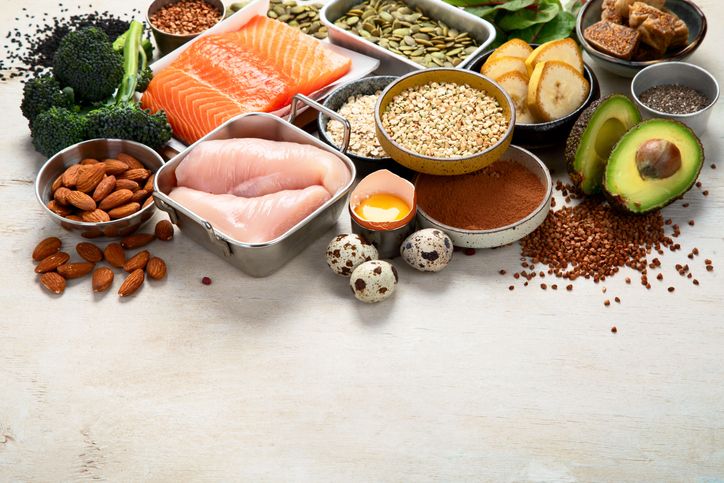
Low protein = muscle loss
When you're trying to burn fat, eating too little protein makes it harder to keep your muscle mass. In a calorie deficit, your body starts using muscle for energy if you’re not eating enough protein. That leads to muscle loss, a slower metabolism, and poor body composition—even if you're losing weight on the scale.
Protein keeps you full and fuels recovery
Protein supports muscle recovery and helps reduce cravings. It also increases satiety, so you're less likely to overeat. This makes it easier to stick to your calorie goals and avoid processed foods that slow down fat loss.
Total protein matters more than timing
Some people stress about exact timing—like eating protein within 30 minutes of a workout. But what really matters is hitting your total daily intake. Aim for 0.8 to 1.2 grams of protein per pound of body weight, spread across your meals.
Track what you eat
Most people incorrectly estimate how much protein they’re eating. To get it right, you need to track it. Use a food diary or app, weigh your portions, and stick with high-protein foods like chicken, eggs, fish, lean meats, and Greek yogurt. Without enough protein, your fat loss progress will slow, and you’ll risk losing lean mass.

Avoiding Strength Training

Cardio alone won’t protect your muscle
Many people trying to lose fat focus only on cardio and skip resistance training. But without strength training, your body is more likely to lose muscle, not just fat. This affects your metabolism and slows progress.
Strength training boosts your metabolism
Lifting weights or doing resistance exercises builds lean muscle. Muscle tissue burns more calories than fat, even when you’re resting. That means more muscle = more calories burned throughout the day, which supports fat loss.
It helps shape your body
Burning fat without building muscle can leave you with a smaller but softer body. Strength training improves body composition by preserving lean mass while reducing fat, helping you look stronger and more defined.
You don’t need to lift heavy
You don’t need to become a bodybuilder to see results. Using resistance bands, bodyweight exercises, or light weights with higher reps still works. Aim for strength training 2–3 times a week, focusing on compound movements like squats, lunges, rows, and presses.
Book Now to Experience
S6 Body Sculpting Treatment
1 Minute Self-Registration
Date should not be before minimal date

Following Fad Diets and Quick Fixes
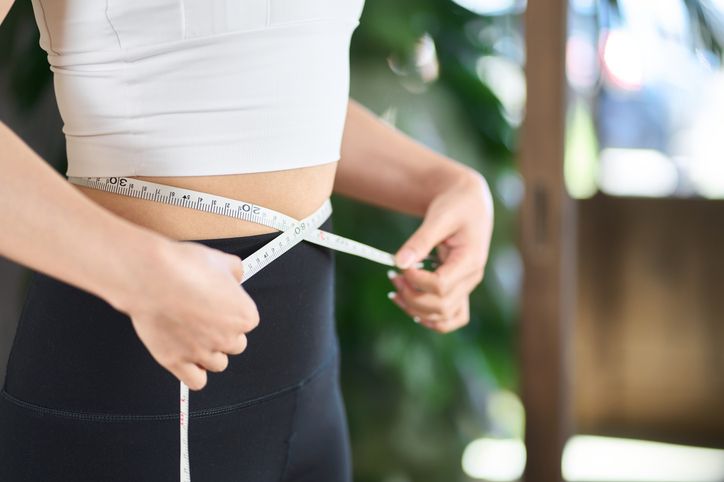
Fast results rarely last
Fad diets promise rapid fat loss, but they’re usually too extreme to keep up with. Cutting entire food groups or eating way too few calories might show results at first, but it often leads to weight gain later. These plans don’t support sustainable fat loss.
You lose water and muscle, not just fat
Most of the weight you lose on quick-fix diets is water and muscle—not excess fat. That affects your body composition and can slow your metabolism. Once the diet ends, your body rebounds, and you often regain more weight than you lost.
It’s hard to stick with unrealistic plans
Skipping meals, avoiding carbs, or eating only one type of food isn’t realistic for most people. Life happens—social events, busy schedules, cravings—and rigid diets break down fast. That’s why people end up cycling through diet after diet without lasting results.
Focus on habits, not shortcuts
Instead of following trends, build consistent habits. Eat balanced meals from all food groups, aim for enough protein, and avoid added sugar and processed foods. You’ll lose fat and gain muscle in a way that fits real life—and that’s what leads to long-term progress.

Neglecting Sleep and Recovery

Poor sleep slows fat loss
When you don’t sleep enough, your body produces more cortisol—a stress hormone that encourages fat storage, especially around your belly. Lack of sleep also affects hormones that control hunger, making you crave more calories and processed foods the next day.
Your body needs time to recover
Training without proper rest breaks down muscle and increases stress. Recovery is when your body repairs muscle tissue and burns calories through the repair process. Without rest days, you risk overtraining, muscle loss, and mental burnout.
Sleep supports hormone balance
During deep sleep, your body releases growth hormone and testosterone. These support muscle growth, fat metabolism, and recovery. Getting 7–9 hours of quality sleep helps maintain lean mass and keeps your energy stable while in a calorie deficit.
Prioritize rest like you do workouts
Skipping rest is just as harmful as skipping workouts. Schedule rest days, manage stress levels, and create a bedtime routine that supports quality sleep. This helps improve overall health and gives your body the best chance at sustainable fat loss.
Book Now to Experience
S6 Body Sculpting Treatment
1 Minute Self-Registration
Date should not be before minimal date

Ignoring Portion Control and Mindful Eating
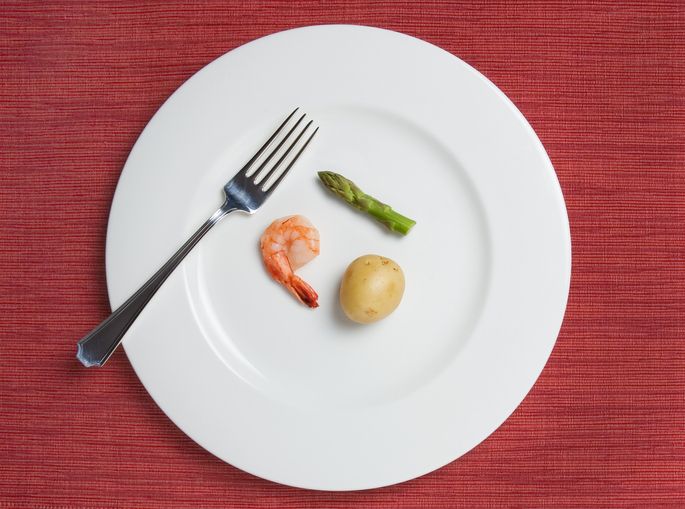
Eating “healthy” food doesn’t mean eating unlimited amounts
Even nutritious meals can lead to weight gain if you eat too much. Foods like nuts, avocado, or lean meats are healthy—but they still contain calories. If you’re not paying attention to how much you’re eating, you may go over your daily calorie needs without realizing it.
Mindless eating leads to more calories
Eating while distracted—like in front of the TV or while scrolling your phone—makes it easy to eat past fullness. You might not notice how much you’ve eaten, which can make burning fat harder over time.
Small changes can help you eat less
Use smaller plates to control portions naturally. Slow down during meals and take time to chew your food. Give your body a chance to signal when it’s full. These small habits can reduce calorie intake without feeling restrictive.
Track portions to stay on track
You don’t need to obsess, but being aware of your portions helps you stay in a calorie deficit without cutting out entire food groups. Try keeping a food log, especially during the early stages of fat loss, to help you stay consistent and make better choices.

Drinking Empty Calories

Liquid calories add up fast
Sodas, fruit juices, fancy coffees, and alcohol can sneak in hundreds of calories without filling you up. These drinks don’t provide protein, fiber, or healthy fats—just sugar and energy your body burns quickly or stores as fat.
Your body doesn’t register liquid calories the same
Unlike solid food, liquid calories don’t trigger the same fullness signals. You can drink a 300-calorie smoothie and still feel hungry an hour later. This makes it easy to go over your calorie limit without realizing it.
Watch for “healthy” drinks too
Some drinks seem healthy—like protein shakes, fruit smoothies, or plant-based milks—but they can still be high in added sugar or too many calories for your fat loss goal. Always check the ingredients and portion size.
Choose drinks that support your goals
Stick to water, black coffee, or unsweetened tea. They hydrate you and support fat burning without adding calories. If you want flavor, add fresh lemon, cucumber, or mint to your water. Small changes like this can help you lose weight without feeling restricted.
Book Now to Experience
S6 Body Sculpting Treatment
1 Minute Self-Registration
Date should not be before minimal date

Not Tracking Progress Accurately

The scale doesn’t tell the full story
Relying only on your scale weight can be misleading. Your body weight can change daily due to water retention, food intake, or hormonal shifts. You might lose fat and gain muscle, but the scale won’t show it—making it easy to think you’re not making progress.
Use multiple tracking methods
To get an accurate picture of your fat loss journey, track more than just your weight. Take weekly progress photos, measure your waist, hips, and other areas with a tape measure, and pay attention to how your clothes fit. These signs often reflect changes in body composition better than the scale does.
Be consistent with your tracking
Check your stats under the same conditions each time. Use the same scale, weigh yourself at the same time of day, and take measurements in the same spot each week. This helps you notice real trends instead of getting thrown off by normal fluctuations.
Track habits, not just results
Logging your workouts, meals, and sleep gives you insight into what’s working. Fat loss isn’t just about outcomes—it’s about consistency. Keeping track of your actions helps you adjust your plan and stay on course, even when progress feels slow.

Overestimating Calories Burned During Exercise

Fitness trackers often overestimate
Many people rely on fitness apps or heart rate monitors to estimate how many calories they burn. But these tools often give inflated numbers—sometimes by 20–40%. That can lead you to think you’ve “earned” more food than you actually have, slowing down fat loss.
Calorie burn depends on many factors
How many calories you burn during a workout depends on your weight, fitness level, muscle mass, and the type of exercise. Most devices don’t account for all these variables. They use general formulas that aren’t personalized, so the numbers aren’t always accurate.
Don't let numbers fool you
If you believe you’re burning more than you are, you may eat too many calories and fall out of a deficit. This can lead to weight gain or stalled progress—even if you’re working out regularly. It’s easy to undo an hour of exercise with one high-calorie meal or drink.
Focus on effort and consistency
Instead of chasing calorie burn, focus on showing up consistently, pushing your intensity when it counts, and pairing exercise with smart eating. Track your workouts, notice how your strength and endurance improve, and keep your meals aligned with your goals. That’s where real progress happens.

Support Your Fat Loss Journey with S6 Body Sculpting Treatment
Fat burning isn’t always about doing more
Even if you're eating in a calorie deficit, lifting weights, and doing cardio, some areas of body fat can still be hard to lose. Places like the belly, thighs, back, and arms often hold onto fat longer due to genetics, hormones, or a slower metabolism. This is where support treatments can help.
What is S6 Body Sculpting Treatment?
S6 Body Sculpting Treatment is a non-surgical, non-invasive body contouring solution that targets stubborn fat. It uses a low-energy bio-laser to break down fat cells beneath the skin. The laser helps release fatty acids from fat cells, which are then flushed out through your body’s lymphatic system. Vacuum suction is also applied during the treatment to improve circulation and increase metabolic activity.
How the treatment works
1. Your therapist will assess your body and identify target areas.
2. A handheld probe emits low-energy bio-laser to the chosen spot.
3. Fat cells are broken down, and vacuum suction helps drain them out.
4. At the same time, the treatment stimulates collagen to tighten skin and reduce sagging.
Each session is safe, gentle, and doesn’t require any downtime. Most people complete a course of 10–12 treatments, spaced about a month apart.
Why it works well with your fat loss routine
S6 isn’t a replacement for diet and exercise—it’s an added tool. It works best when combined with strength training, balanced nutrition, and proper recovery. By improving fat breakdown in resistant areas, it supports better body composition and helps maintain lean muscle. It’s ideal for people who want to lose fat in specific areas without surgery or medication.
Benefits of S6 Body Sculpting Treatment
• Targets stubborn fat in key areas like belly, thighs, and arms
• Increases fat metabolism with zero downtime
• Stimulates collagen for firmer, tighter skin
• Supports your existing fat loss routine without disrupting it
• Suitable for different body types and fitness levels
If you’re already putting in the work but need an extra push to burn stubborn fat, S6 Body Sculpting Treatment can help move things along.
Book your S6 Body Sculpting session today and support your fat loss results—without the guesswork.
New Beauty's S6 Body Sculpting TreatmentBook Now to Experience
S6 Body Sculpting Treatment
1 Minute Self-Registration
Date should not be before minimal date
FAQ
How Long Does It Take to Start Seeing Visible Fat Loss Results?
You'll typically start noticing initial fat loss changes within 4-6 weeks of consistent diet and exercise, though this varies based on your starting point, caloric deficit, and exercise intensity. Visible results often appear first in your face and waist, while stubborn areas may take 8-12 weeks to show noticeable changes. Your body composition, genetics, and lifestyle factors will influence your individual fat loss timeline.
Can Certain Supplements Boost the Rate of Fat Burning?
While certain supplements like caffeine, green tea extract, and L-carnitine can modestly support fat metabolism, they'll only provide marginal benefits. You'll see better results by focusing on proper nutrition and exercise, as supplements typically offer a 2-5% boost at most when combined with a healthy lifestyle.
Does the Time of Day I Exercise Affect Fat Burning?
While you can burn fat at any time, research suggests that morning workouts, particularly on an empty stomach, may slightly increase fat oxidation due to lower glycogen levels. However, the most important factor isn't timing but consistency and total caloric expenditure throughout the day. You'll achieve better results by choosing a workout time you can stick to regularly, rather than forcing yourself to exercise at a specific hour.
Are There Specific Body Areas Where Fat Burns First?
You can't spot-reduce fat from specific areas, as your genetics largely determine where fat is stored and burned. When you create a caloric deficit, your body typically burns fat in a predetermined pattern: men often lose abdominal fat last, while women tend to hold onto hip and thigh fat longer.
What Hormones Play the Biggest Role in Fat Storage and Loss?
Several key hormones substantially influence your body's fat storage and loss processes, with insulin, cortisol, and leptin being the primary players. Insulin regulates glucose metabolism and promotes fat storage, while cortisol, your stress hormone, can increase belly fat accumulation when chronically elevated. Leptin, produced by fat cells, signals satiety to your brain, though you can develop resistance to its effects, making weight management more challenging.
Recommended Articles
COPYRIGHT© NEW BEAUTY MANAGEMENT LIMITED 2025. ALL RIGHT RESERVED.

